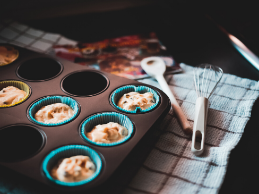
Looking for a way to do a little science and make a little snack? Here’s an experiment that will be sure to yield delicious results! This STEAM activity will focus on how leaveners work in baking.
You’ll need a batch of cake batter without leaveners, baking powder, food coloring, measuring spoons, and somewhere to record your data.
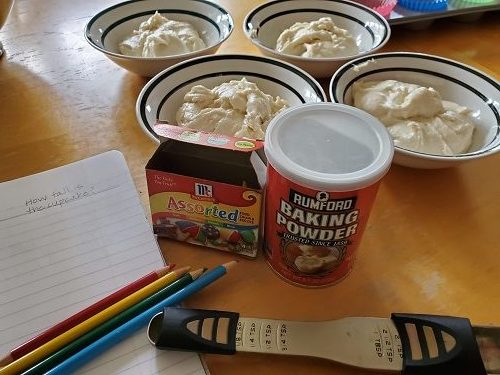
Your cake batter can be any cupcake recipe without leaveners in it. You can use whatever recipe is your favorite and just leave out any eggs, yeast, baking powder, or baking soda. If you don’t have a go-to cupcake recipe, try this one:
- 1 cup white sugar
- 1 stick unsalted butter, softened
- 1 teaspoon vanilla extract
- 2 cups all-purpose flour
- 1 cup whole milk
Beat the butter and sugar together until light and fluffy. Add vanilla and mix until combined. Add the flour alternately with the milk in small increments, about 4 additions of each.
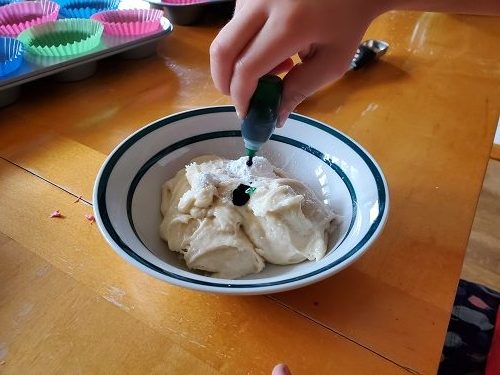
Now that you’ve got your cake batter made, divide it into 4 bowls. Add a different amount of baking powder and a different color dye to each bowl. Record how much baking powder you put into each color of batter. Spoon the batter into paper-lined or well-greased cupcake tins and bake for 15 minutes or until an inserted toothpick comes out clean.
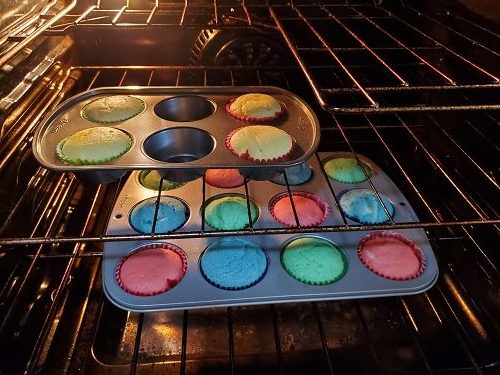
While you’re waiting for the cupcakes to bake, you can read a story about baking or, for older children, do a little research about why baking powder makes cupcakes rise. Check out some of our online databases to learn more. Try searching for “baking powder” in the Encyclopedia Brittanica or Scholastic Go.
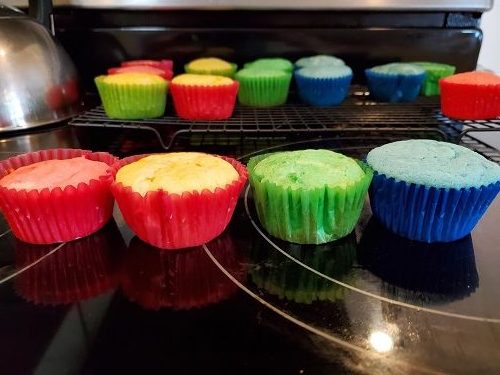
Once your cupcakes are finished baking, take a look at the different sizes! The differences won’t be extreme, but if you look closely you’ll be able to tell. (Note that you’ll have more variation if the cupcakes tins weren’t filled evenly, which is incredibly likely if kids are helping you fill them. Science doesn’t have to be perfect to learn from it!)
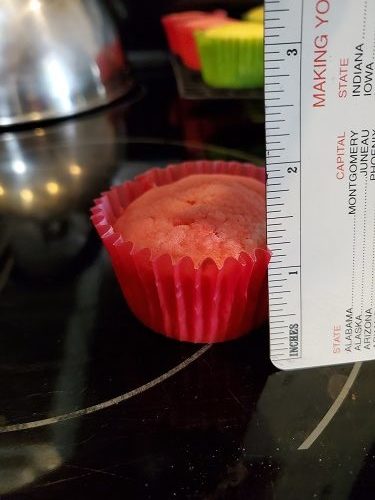
Try measuring one of each color of cupcake. Or older children could measure all of the cupcakes, then find the average height for each color.
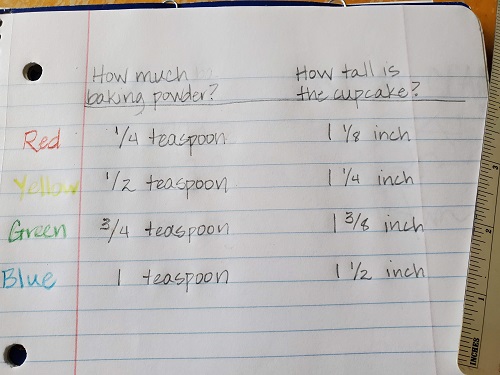
Create a chart to gather your data. If you’re really ambitious, or if you really love cupcakes, you could duplicate this same experiment with different leaveners. Do you find similar results if you use the same quantities of baking soda instead of baking powder? If you use eggs to get your cakes to rise, are the yolks or whites more effective? What if you beat the eggs before you fold them into the recipe?
Now that you’ve got all these delicious cupcakes of varying heights, why not try decorating them with some swirl frosting? Check out our blog post from May to learn how!
Want more baking, and kitchen science? Check out these awesome titles!
Skip to End of Carousel